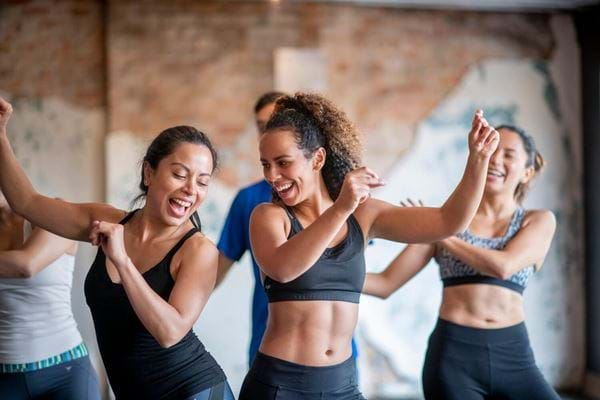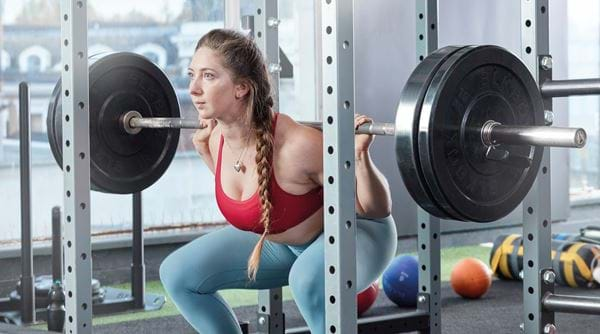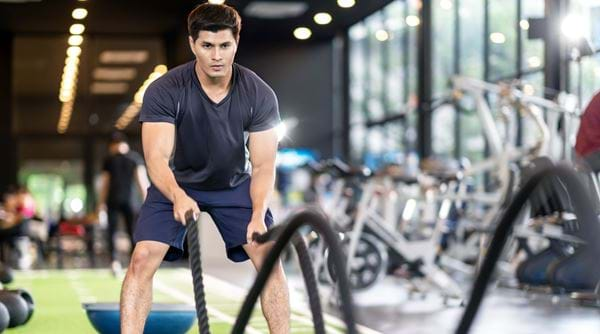The UK Fitness Report – 2022/23 Gym Statistics
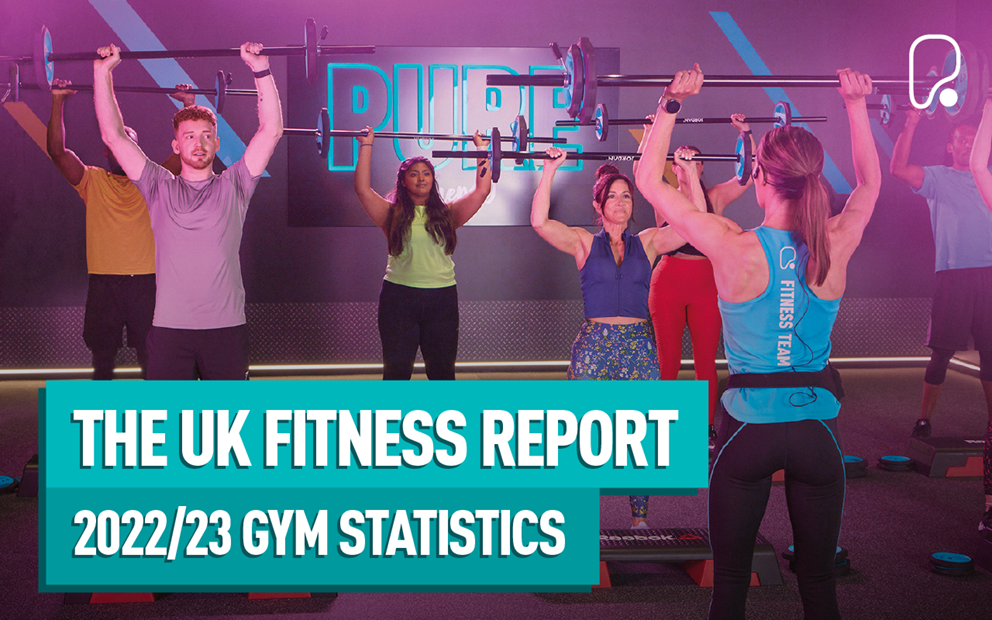
This is the first edition of the annual PureGym UK Fitness Report, where we take an extensive deep dive into the nation’s exercise regimes, attitudes towards the gym, sporting activity, and even how healthy we all really feel, in 2022/2023. For an up-to-date view of fitness in the country, you can find the latest version of the UK Fitness Report here.
To create this report, we’ve used data from YouGov, Google Search, independent surveys, and our own internal data. As a low-cost gym, we’re aware that our audience isn’t necessarily nationally representative, especially in areas where we do not currently have gyms. Using multiple data sources allows us to see the bigger picture across the UK and provide an accurate benchmark.
The report comes complete with expert opinion on what the data all means, as well as advice for anyone aiming to make 2023 a year of better health!
Read the report below, or download a copy.
What the report covers:
- The current state of fitness in the UK
- 2022/23 gym usage
- How long do people spend in the gym?
- How often do people visit the gym?
- What are the busiest days/times at the gym?
- What are the quietest days/times at the gym?
- The most popular gym equipment
- The most popular gym classes
- Why do people go to the gym?
- Why don’t people go to the gym?
- Looking ahead – fitness trends for 2023
The Current State Of Fitness In The UK
Key Findings
-
79% of the UK population feel their health has become more important over the last three years
-
58% of people in the UK exercise at least once a week
-
34% of the population don’t exercise every week
-
64% of people in the UK feel they don’t look after their health as much as they should
-
23% of the UK population currently do not consider themselves to be healthy from any point of view (physically, mentally, emotionally or socially)
-
Women are more likely to consider themselves as being unhealthy (26%) vs men (21%)
-
65% of people in the UK regularly experience fatigue. This is again higher for women (71%) than men (59%)
-
36% of the population feel that there simply isn’t enough time in their day to exercise
While covid rarely frequents the news anymore with most people going about their daily lives, it’s clear that for many, living through a pandemic has changed our thoughts and behaviours in many ways, including how seriously we take our health. Our research found that 79% of the population agree that their health is more of a priority now than it was just three years ago. And it’s not just all talk, no action - the majority of people (58%) now exercise at least once every week, with only a third (34%) not doing so.
While it’s great that more people than ever are recognising the importance of looking after physical and mental health, we wanted to understand whether the nation actually feels healthy?
Unfortunately, there is a way to go until we’re a collectively healthy, and importantly, happy nation. Almost a quarter (23%) of the population currently do not consider themselves to be healthy from any point of view. This number is even higher for women (26%) than men (21%), a difference that we’re sadly seeing play out in the gym. We’ve seen men are more likely to join and attend the gym, and since covid particularly, women have been much slower to return.

We wanted to understand why, when so many people believe their health is a priority, there are so few of us who feel they are achieving this goal. Almost two-thirds (64%) of those surveyed said they don’t look after their health as much as they should, with being worn out or too tired (65%) the main reason that was cited for this. Women (71%) are much more likely than men (59%) to state they experience regular fatigue issues.
Another blocker is simply lack of time; just over a third (36%) feel that there simply isn’t enough time in the day to stay active and work on their overall health. Between work, family, and social commitments, we appreciate that squeezing in a workout can seem impossible. However, with exercise strongly linked to improvements in physical and mental health, we want to emphasise that any physical activity, no matter how short, is worth doing. From a 10-minute HIIT workout on your lunch, to simply parking further away so you can get an extra 20 minute walk each day, every little adds up.
2022/23 Gym Usage
Key Findings
-
14% of people in the UK are currently a member of a gym
-
A further 19% are planning on joining a gym in the next calendar year
-
London, the North West and Yorkshire have the highest levels of gym members
-
The South West and East of England have the lowest levels of gym members
As it stands, 14% of people in the UK are currently members of a gym. Based on the current population, this amounts to close to ten million people!
That’s an impressive figure, but it’s one that could more than double in 2023: 19% of UK residents told YouGov that they plan on joining a gym in the next 12 months, further evidence that as a nation we are trying to prioritise our health where we can.
As a gym, we are obviously delighted that more people want to embark on their fitness journey by joining a gym. We currently have more than 320 gyms across the country, and are set to have around 400 by the end of 2023.
Which Part Of The UK Has The Most Gym Members?
While there’s millions of UK residents hitting the gym, it’s not equal throughout the country.

With almost 1 in 5 Londoners members of a gym, the capital stands tall as the nation’s most active gym-going population. However, outside of London, the north has a much higher number of gym users per capita, with the North West and East, and Yorkshire and Scotland coming in second and third respectively.
How Long Do People Spend In The Gym?
Key Findings
-
The average length of time people exercise for is between 30 and 59 minutes
-
A quarter of people (24%) spend 29 minutes or less working out, per session
-
39% of people exercise for an hour or longer, per session
-
5% of people say their average session length lasts between two and four hours
-
2% spend four or more hours exercising, per session
With lack of time one of the main barriers to why people don’t exercise, we wanted to understand how long gym goers are dedicating to their workouts. This is a question commonly asked by new members, as well as experienced gym goers – is there ever such a thing as a workout that’s too short or two long?
YouGov data shows that, for most people (36%), 30-59 minutes is the sweet spot for a workout. Our own member data reflects this, with the average visit tracking in at 66 minutes – well within the 30–59-minute workout with some time to get changed before and after.
For those whose workouts fall either side of this time, 17% say their workouts are 15-29 minutes, and 21% spend 1-1.5 hours working out each time. While you might think the longer the better, this isn’t necessarily the case. Those who do fit into the 30–59-minute mark will be pleased to know that they’re right on the money. “30-59 minutes is more than enough to get an effective training session for most goals. That’s one of the reasons why group exercise classes last this long” says Emma Vincent, a PT from PureGym Romford.
That said, if your workout falls out of this time period, don’t worry. Emma explains that “there isn’t a perfect or set amount of time for a workout. It will always depend on the individual and the type of workout they are performing”. This makes sense, as the amount of time spent exercising isn’t the only factor in how ‘successful’ a workout is. Your goals, the intensity of the workout, and how much time you have to spare, will all play into how long you should spend working out.

If one of your goals is cardiovascular endurance, working out for longer periods is beneficial. And for those who strength train, scheduling longer sessions allows you to train for volume while allowing for rest periods.
There are definite benefits to working out for longer, but also some things to be mindful of, as Megan Knight, another PureGym PT explores:
“Longer workouts can be a helpful way to increase your calorie expenditure, which is useful for those with fat loss goals. It’s also ideal for anyone wanting to improve their strength and endurance, and gain muscle, as it allows for higher levels of training volume.
That said, it’s important to understand that longer workouts are not necessarily better, and we wouldn’t recommend spending hours working out each day as it can lead to fatigue and increased risk of injury.”
When it comes to exercise, sometimes less can be more, and it’s usually better to put more effort in for a shorter amount of time, than workout for longer but less efficiently. Paying attention to how you feel, both in and outside of exercise, and tracking your progress, can help you understand what the ideal amount of time to exercise is for you.
What Are The Benefits Of Working Out For Less Than 30 Minutes?
While the average time spent working out is 30-59 minutes, not everyone can manage this – remember, 36% of the nation feel they don’t have any time to work out, let alone an hour each day. Can shorter workouts truly be just as effective?
Fortunately, the answer is absolutely yes. It’s all about making the most of your minutes and choosing the right type of workout for the timescale. PT Beth Brotherton provides her expert advice:
“If you prefer or are only able to commit to shorter workouts, aerobic training, HIIT, or circuit style weight training that keeps the heart rate high will help you get the most out of your workouts.
For those that prefer traditional weight training, I’d recommend prioritising compound movements such as deadlifts and squats, as these recruit more muscles and burn more calories than isolation exercises”.
Plenty of gyms, PureGym included, do 30-minute fitness classes that aim to achieve maximum results in minimal time, so if you’re struggling to get the most of shorter workouts by yourself, these can be a great option.
How Often Do People Visit The Gym?
Key Findings
-
The majority of gym goers (76%) visit the gym two times or more, per week
-
Just over 1 in 10 (14%) visit the gym every single day
-
1 in 4 (19%) go to gym once every week
-
5% visit the gym less than once per week
Thirty minutes to an hour is a good barometer of how long to spend in the gym, but what about how often you should be going - is once a week enough, or does the gym have to be an everyday commitment?

The overwhelming majority (76%) of gym goers in the UK visit two or more times every week, with 14% of those visiting every day. It’s not necessarily the case that more is more, however, so if you are leaning more towards twice a week than daily, that’s not an issue, as Beth explains:
“The frequency that someone visits the gym is very individual, and all dependent on their goals and lifestyle. The general guidelines are that everybody should try to get 150 minutes of moderate-intensity (or 75 minutes of vigorous) physical activity and 2 days of muscle strengthening activity per week.
But whatever someone can commit to when coming to the gym, whether that’s 2 days a week or 6 days a week, is a great starting point”.
The most important thing is that people are building healthy habits and being active, no matter what that looks like when you are first starting out. If you can’t commit to visiting the gym multiple times a week, can you grab a 10-minute workout at home on some days? Understanding your baseline and how to build on this is key.
For those who do want to join the gym and get more active, we’ve created a helpful resource on getting started at the gym here.
What Are The Busiest Days/Times At The Gym?
Key Findings
-
Tuesday is the busiest day to visit the gym
-
Between Monday and Wednesday is when gyms are at their busiest
-
Gyms are generally at their busiest between 5-7pm
-
Smaller peak periods also happen between 12-1pm, 6am-7am and 9am-10am
-
February is the busiest month of the year to visit the gym
-
The busiest day of the entire year at the gym falls on the second Tuesday in March
With lack of time one of the main reasons people give for not working out, we wanted to understand how and when people fit exercise around their work, family, and social lives. Using data from our PureGym app, we’ve analysed the busiest and quietest times to head to the gym.
Monday to Wednesday are the busiest days at the gym, with visits peaking on Tuesdays. This suggests that people tend to hit the gym after the weekend, perhaps as energy and motivation is higher following a break.
Between 5-7pm on weekdays are when gym visits are generally at their highest, however we see smaller peaks throughout the day at 12-pm, 6-7am, and 9-10am. This shows that people are working out around work, whether that be before they start, or in their lunch.
It comes as no surprise that annually, the New Year is the busiest period, with many joining and hitting the gym as part of their new year resolutions. February is the busiest calendar month, and the second Tuesday in March is the busiest day.
What Are The Quietest Days/Times At The Gym?
Key Findings
-
Sunday is the quietest day to visit the gym
-
Between Thursday and Sunday is when gyms are at their quietest
-
Gyms tend to be quieter in late morning (11am-12pm), in the afternoon (2pm-4pm) or later in the evening (8pm onwards)
-
December and August are the quietest months to visit the gym
-
Outside of Christmas, Boxing Day and New Years Day, Bank Holiday Mondays tend to be particularly quiet at the gym
For those who express that gym anxiety is a reason for not attending, hitting the gym when it is quiet is a great way to build confidence and become accustomed to the equipment and classes on offer.
Our data shows that the second half of the week is ideal for this as visits tend to slow down between Thursdays and Sundays, with the quietest day usually falling on a Sunday.
In the week, as peak periods tend to fall within those post 9-5 hours, quieter times are usually just before the after-work rush (2pm-4pm), during late morning (11am-12pm) or later on in the evening, once the rush has eased (8pm onwards).
Unsurprisingly, Christmas Day, Boxing Day and New Year’s Day are the quietest gym days of the year, with Bank Holiday Mondays also particularly quiet. December, due to the Christmas period, and August, when many are away on their summer holidays are also the best months for a more chilled time at the gym. Perfect if you want a head start before visits start to spike in January and February.
While these busy and quiet periods are a good guide, it is always worth checking the PureGym app, as you’ll be able to see how busy your chosen gym is in real time, helping you to decides when is best to plan your own visits!
The Most Popular Gym Equipment
Key Findings
-
The free weights area is the most popular of the gym, with 93% of PureGym gym managers deeming it as a highly popular part of the gym
-
The free weights area is followed by areas with fixed weight machines (40%), functional training areas (36%) and the cardio training area (26%)
-
As voted for by gym managers, the most popular piece of free weight equipment in the gym is the squat rack, followed by dumbbells and weight benches
-
The most popular piece of fixed weight equipment is the 5/8 stack, followed by the lat pulldown and leg press machines
-
The most popular piece of cardio equipment is the treadmill, followed by stair climbers and cross trainers
Gyms are filled with all sorts of different equipment to help cater to the diverse goals we’ve mentioned above. They all bring with them their own benefits, and all have their place within a fitness plan.
However, any gym member will quickly find that they’ll develop their favourites when it comes to equipment. Be it personal preference or how effective you find the particular piece of kit, there are definitely some trends when it comes to gravitating towards certain areas of the gym.
We surveyed our gym managers to find out the most popular pieces of gym kit, and why these pieces of equipment are so popular.
With an overwhelming amount (93%) of our gym managers deeming that the free weights area is the undisputed most popular part of any gym, it’s only right to start there.
The Most Popular Free Weight Equipment
There’s one piece of equipment that our gym managers were almost all in agreement on being the most popular element of any free weights area, and that’s the squat rack.
Versatility is key to its popularity here, as Laura Eaton, PT at PureGym Sheffield explains, “There is a huge variety of exercises that can be performed in the squat rack which makes it useful for most gym goers.
Aside from the obviously popular back squat, we can also see lifts such as the front squat, rack pull, deadlift, bench press and overhead press performed in the squat rack and adjoining platform. The space provided with the squat rack means that people can lift with friends without being crowded and effectively support other lifters with spotting techniques”.

While the free weights are hugely popular, we know first-hand both from our previous research and new member feedback that this area is home to most feelings of gymtimidation. As part of our commitment to reducing barriers to working out, we launched Learn To Lift workshops in 2022 to help gym members feel more confident tackling the free weight section. We also run induction sessions, and our PTs are always on hand to give advice.
Laura shares her advice on getting started with free weights:
“When choosing a weight, go for one that is challenging but allows you to complete the exercise with good form. If you are learning a new movement, try with light or no weights to understand the movement pattern first – this will help to avoid injury and ensure you are using the right muscles.
Once you’re more confident in the gym, supersetting movements especially with opposing muscle groups can also be a great way to keep your workout time efficient and fun. A superset to try with free weights could be a set of bicep curls followed immediately by a tricep extension”.
The Most Popular Cardio Equipment
While the free weights section might be the most popular area of the gym on the whole, two cardio machines actually stand tall as the most popular pieces of equipment: treadmills and stair climbers were voted as being some of the most sought-after and well-used equipment by our gym managers.
It’s easy to see why these cardio machines are so popular; both are simple to use even without prior experience, both new and long-standing gym goers can benefit from using them. For those just starting out at the gym, treadmills and stair climbers are activities they know they can do as it closely replicates movement in daily life, so unlike weights which can seem new and intimidating, there’s little to fear with these bits of kit. For all gym members, the treadmill and climber provide a way to build cardiovascular endurance, burn calories, and warm up prior to weight training.

If you’re planning on using a treadmill on your next visit to the gym, how about giving this work out a go? Created by Alin Ursache, from PureGym Leeds.
Treadmill Intervals
- Safety clip on your shorts/pants (avoid clipping loose t-shirts)
- Set the treadmill for 25 mins
- Warm up for 5 mins by gradually increasing the speed to 6 km / hour
- Progress it to a brisk pace for another 5 mins. This should be a challenging pace and for most people is between 6.4 -6.8 km / hour
- Alternate 1 minute of jogging at 7.5 km /h with 2 mins of brisk pace*
- Repeat 5 times
- Additional cool down period will be automatically added by the treadmill
*Feel free to adjust the jogging /running pace if it feels too easy or too hard.
This should considerably increase your flat jogging speed in less than a month, if you attempt it even just twice a week. Regardless of what you are doing on a treadmill, to get the best out of it aim to increase the walking/running speed from time to time, rather than time of the workout.
The Most Popular Resistance Equipment
Fixed resistance or fixed weight machines are another gym staple, and we were keen to find out which of these machines were most popular too. The 5/8 stack multi station cable machines came out top, which comes as no surprise due to their versatility – these pieces of kit can be used for exercises spanning every muscle group and help for both strength and hypertrophy goals.
Laura echoes this sentiment when discussing the clear winner of resistance machine equipment: “Cable machines are one of my personal favourites and I’m not surprised they came out top, there are so many exercises that can be performed using the 5/8 stack.
A full body workout can be performed using the cable machine set to different heights and using different attachments based on which movement pattern is being performed”.

With all that versatility in mind, what workouts should you give a go on the beloved 5/8 stack? Let’s ask Laura:
“As the 5/8 stack has two cable machines facing each other, both sides can be utilised by the user to perform cable chest flys, delt fly and lateral raises, making the workout efficient and easy to perform. Cable machines are also ideal for super-setting and moving between movements quickly.
One exercise that I believe should be added as part of anyone's upper body routine is the face pull with the rope attachment. This can be performed from a seated, standing or laying down position and can effectively target the rear delt muscles with minimal set up time”.
The Most Popular Gym Classes
Key Findings
-
Cycle/spin classes are the most popular gym classes in the UK
-
The top ten most popular classes also include legs, bums & tums, step and bootcamp classes
We’ve worked our way around the gym but one area we’re yet to touch is gym classes. A fan favourite for new members and seasoned gym goers alike, classes are great for mixing up your time at the gym, learning new techniques, meeting new faces and of course, getting in a good session!
Bookable via the PureGym app, we analysed class booking data to reveal the most popular classes in 2022, which are:
-
Cycle
-
Legs, Bums & Tums
-
Pump
-
Bodytone
-
Burn It
-
Circuits
-
Absolute Abs
-
Step
-
Bootcamp
-
Sweat 30
A formidable mixture of class choices, Cycle stands tall as our most popular. Again, another choice that is easy to get started with, using a piece of equipment most of us will be familiar with. Cycle classes are a great way to help hit weight loss targets, as well as aiding core and lower body strength. Plus, due to the pumping music and atmosphere, they’re a lot of fun too.
Each class is geared towards a different goal, so it’s well worth taking a look at a breakdown of each one, however if you’re looking to try something new, take it from our Group Exercise Programme Manager, Dave Cross:
“One of the most common misconceptions when it comes to classes is the phrase “I’ll wait until I’m a bit fitter before I do a class”. Forgetting that this is one of the great benefits of classes and group exercise.
Taking all of the thinking and planning out of your workouts, classes can be a great place to learn new movements, reach new levels of ability, train and be coached within a group of likeminded people, all whilst having fun and listening to great music.
We would always advise turning up to your class in good time to allow you to feel comfortable with any kit or set up that the coach might take you through before the class starts. Additionally, this can be a great time to simply familiarise yourself with your surroundings so that you can really enjoy your experience.
Don’t forget to let the class coach know it’s your first time, so that they can give you all the help and guidance you need. Don’t worry, we always have ‘first-timers’ in our classes, so you won’t be alone”.
Why Do People Go To The Gym?
Key Findings
-
The main reason people go to the gym is to get healthy or maintain their current level of health (applies to 22% of gym members)
-
Other key reasons include losing weight (applies to 14% of gym members), getting more toned (13%) or having more variety in workouts (7%)
Throughout this report, we’ve established multiple reasons why the gym is a great place to be. There are varied classes that can help you to build confidence or learn a new skill, there’s tons of equipment to help you reach your goals and of course, there’s a whole community of gym-goers to meet and make friends with.
But what are the key reasons people are going to the gym in 2022/23? As mentioned up front, feeling healthy is something many of us are striving for, reflected in it being the number one reason people head to the gym. It is however followed by a mixture of other reasons, from losing weight and building muscle, to honing a particular athletic skill. It’s all there, it’s just about what your own goals are!

Why Don’t People Go To The Gym?
Key Findings
-
40% of people that don’t currently have a gym membership, feel that gyms are too expensive
-
29% feel that they wouldn’t go to the gym often enough
-
13% feel that they wouldn’t know what to do if they went to the gym
-
Out of both gym members and non-gym members, 56% find going to the gym to be an intimidating experience
-
More women experience gymtimidation than men (67% vs. 49%)
-
1 in 4 gym goers say they currently don’t feel confident while at the gym
Despite all of those great reasons to be a member, it’s always worth talking about the other side of the coin too. We’ve touched on time and confidence hurdles already, but what are the other key reasons people don’t go to the gym?

Occupying the top two reasons, is cost. Especially at a time where the cost of living is a challenge for so many, a membership can feel like too much of an expense. At PureGym, we’re proud to offer affordable pricing, with multiple membership options, student offers and no contracts! To see how much you can save versus other gyms in your area, check out our gym membership options.
The same goes for the blocker of an inconvenient location. Over the years, we’ve been striving to become the most convenient gym in the UK, and with more than 300 gyms nationwide (and more coming) we hope you’ll find a PureGym near you.
How To Beat Gymtimidation
Outside of that, there’s one other clear hurdle for some to overcome: gymtimidation.
We ran a survey to delve further into the subject of gymtimidation, and found that across both gym-goers and non-members, 56% of the population find going to the gym to be an intimidating experience, with more women than men experiencing it (67% vs. 49%).
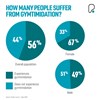
Looking at people who do currently visit the gym, almost 1 in 4 (22%) say they don’t currently feel confident while there.
With our gyms all about fun, inclusion and being able to reach your goals in a safe space, at your own pace, we obviously want to help to turn the tide on gymtimidation and help more people to feel confident. We’ve previously worked with an expert in fear to help with tips on overcoming gymtimidation, which you can read here.
However, Suzy Quinn, PT at PureGym Birmingham offers her advice, and to let you know you’re not alone in the process of becoming more confident at the gym:
“I’ve worked with a lot of gym beginners and it does take time to get over the intimidation. Everyone is different, but generally in my experience it can take anywhere between 2-5 months before my clients have felt confident enough to either train alone or complete their workout without that fear”.
So, it’s a process you’re not alone in and it’s completely human to feel some nerves in a new environment. But what can help? Here’s Suzy’s top tips:
“Training with a friend/PT can help as things are less intimidating when you’re with someone. Classes are also a good idea if you’re intimidated due to lack of knowledge or gym confidence, because you have an instructor to walk you through your workout and offer any support you need. Finally, choose areas of the gym where you feel most comfortable training in to begin with, or try to train at quieter times of the day so you can use the time to build your confidence before you venture out into the wider, busier gym”.
We often find that people may lack confidence because they are unsure what to do once they get to the gym. If you feel in the same boat, try downloading the PureGym app, as it’s filled with hundreds of free workouts to help you on your way.
Looking Ahead: Fitness Trends For 2023
Key Findings
-
The 12-3-30 workout is set to be the biggest fitness trend in 2023, with a huge 309% increase in interest
-
The likes of crossfit, pilates and yoga all look set for a resurgence, occupying the top 15 trends for 2023
-
Unusual fitness trends such as twerking classes (125% increase in interest) and everesting (83% increase in interest) also seem set to take 2023 by storm
-
Meanwhile, online fitness trends will continue their decline in 2023, with the likes of virtual fitness challenges and online fitness programmes experiencing steep drops in interest
-
After seeing a resurgence in recent years, skipping also looks to be on the way out, with a 45% decline in interest as we approach 2023
One other thing that helps a lot of people on their way, is hopping onboard with the very latest fitness trends.
Last year, we looked at the trends that were set to take 2022 by storm, so, what better way to round off our fitness report, than by looking at which trends will lead the way in 2023?
The Top Fitness Trends for 2023
After analysing the number of people searching for over 100 different fitness trends versus the same period last year, you can see right away, that the trends are looking very different for 2023. Previous top trend ‘weighted hula hoops’ is nowhere to be seen in the top rankings, replaced by the popular 12-3-30 workouts.
A quick and simple workout to set up, the workout shot to international fame from TikTok. Coined by content creator Lauren Giraldo, the workout requires you to set a treadmill to an incline of twelve, with a speed of 3mph and walk for 30 minutes. Sound easy? It can actually be harder than it looks as the workout goes on!
PT Laura Eaton says: “Walking is a fantastic cardiovascular activity and adding the incline will help to increase the heart rate - improving cardiovascular health and endurance. This exercise is also much gentler on the joints than running or jogging, making this an excellent choice for different age groups and fitness levels”.
Beyond the 12-3-30 workout, it’s also interesting to see a return to form from pilates and yoga, alongside the more intriguing trends, including twerking classes, indoor surfing and everesting, a running or cycling challenge which requires participants to choose any incline, and repeatedly run/cycle up it until they’ve effectively climbed 8,848 metres – the height of Mount Everest.
2023 Trends, ranked by % increase in Google searches from July - Sept 21 vs July - Sept 22
-
12-3-30 workouts - 308.78%
-
Crossfit - 173.21%
-
Twerking class - 125%
-
75 soft - 124.24%
-
Hyrox - 123.75%
-
Jazzercise - 122.22%
-
Stroller fitness - 88.23%
-
Pilates - 83.60%
-
Incline walk - 83.33%
-
Everesting - 83.33%
-
Floating yoga- 60%
-
Indoor surfing- 50%
-
Hiking - 50%
-
Yoga - 49.72%
-
Rock climbing - 49.63%
-
Calisthenics - 49.63%
-
F45 - 49.59%
-
Zuu - 49.58%
-
Breathwork - 49.44%
-
Outdoor fitness - 49.38%
Which Fitness Trends Are On Their Way Out?
On the flipside, there’s always going to be some trends on their way out. Last year, our analysis revealed that post-pandemic, online and fitness challenges or classes were falling out of favour, and it seems in 2023, that continues to be the same.
While some might have still preferred to exercise virtually in 2022, it does seem that 2023 will be the year we all turn back to in-person exercise, echoed by the top 20 trends for next year all being more centred around in-studio or outdoor activities.
-
Virtual fitness challenges - -45.76%
-
Outdoor personal trainers - -45.45%
-
Skipping workouts - -45.45%
-
Virtual fitness classes - -45.45%
-
Free weight training - -45%
-
100-rep challenge - -34.61%
-
Active video games - -33.33%
-
Online fitness programmes - -33.33%
-
Virtual training - -33.33%
-
Workout challenges - -33.33%
-
Jump rope workout- -33.08%
-
Virtual fitness- -23.07%
-
Aqua spin- -19.44%
-
Online workouts- -19.44%
-
Barefoot workouts- -19.04%
Ready To Hit The Gym?
That rounds off our report. We’re set for a year where TikTok fitness fads may grab attention, but functional, confidence building workouts will be what’s key to growing the overall health of the nation.
If you’re feeling ready for a new fitness journey in 2023 and want to join us, find out more about our membership options here.
Methodology
Data compiled for the report from the following sources:
- YouGov survey – data compiled w/c 28.08.2022
- PureGym internal survey to 92 gym managers, conducted in August 2022
- PureGym survey to 1140 nationally representative consumers, conducted in July 2022
- PureGym internal customer data
- Google Keyword Planner (fitness trends) analysing worldwide search volume. Correct as of October 2022

